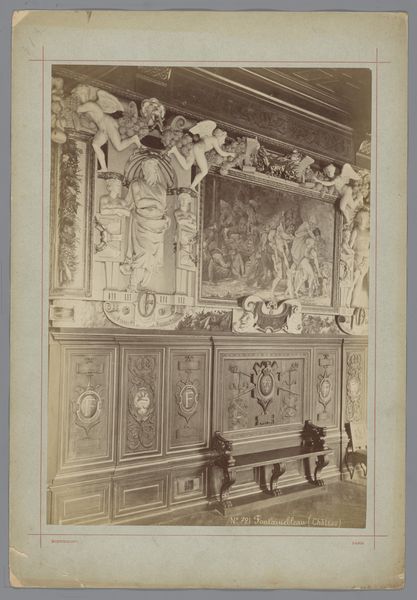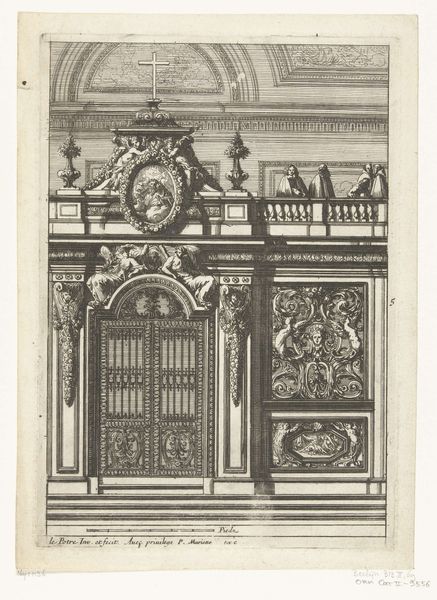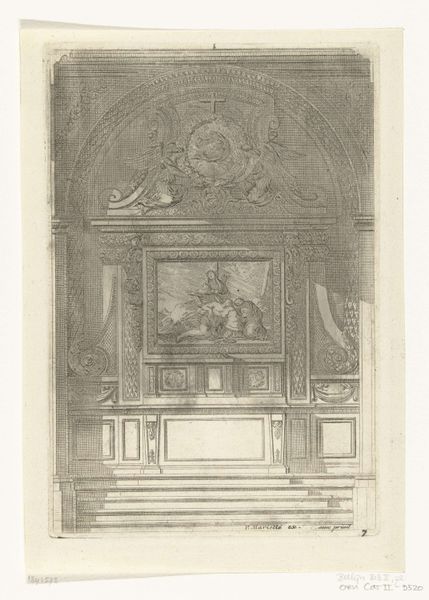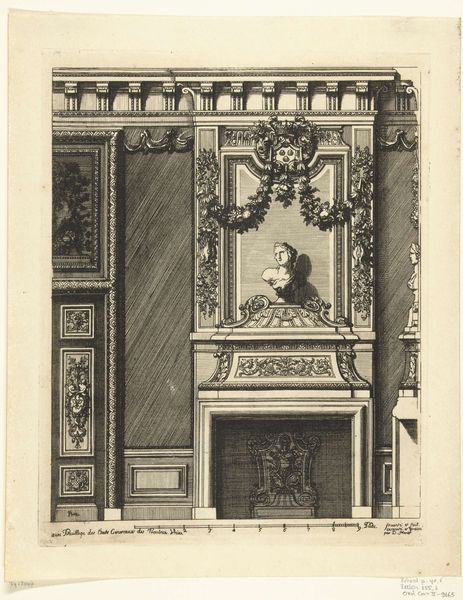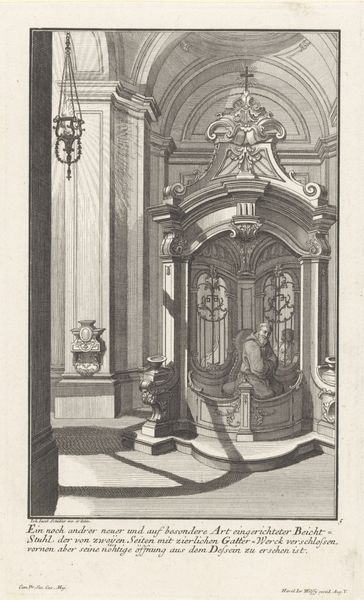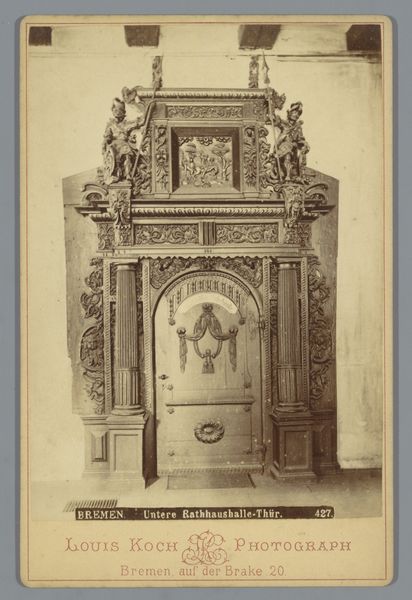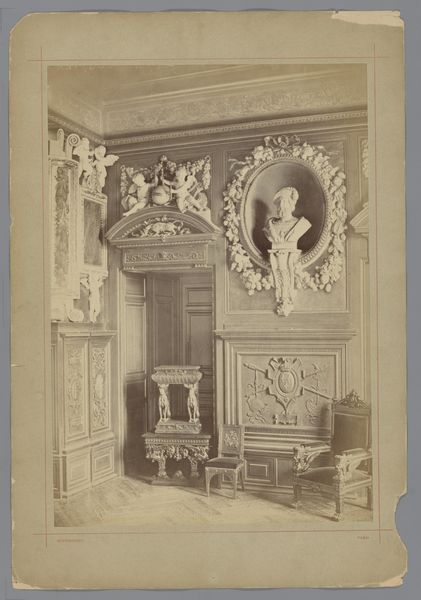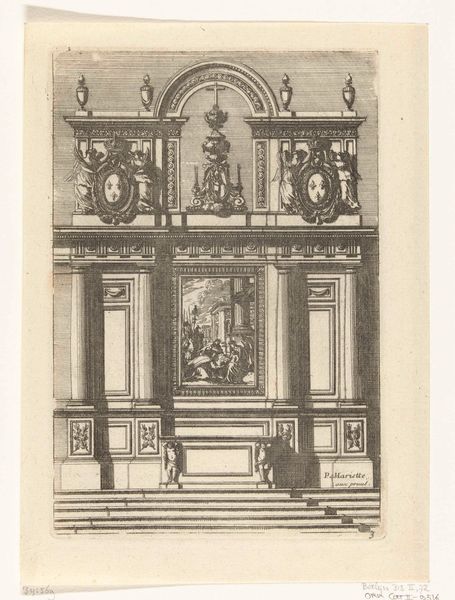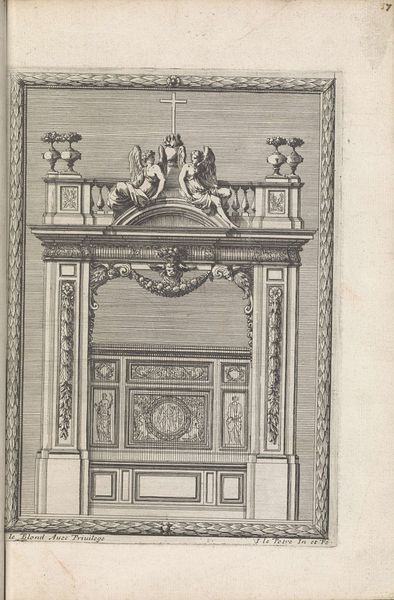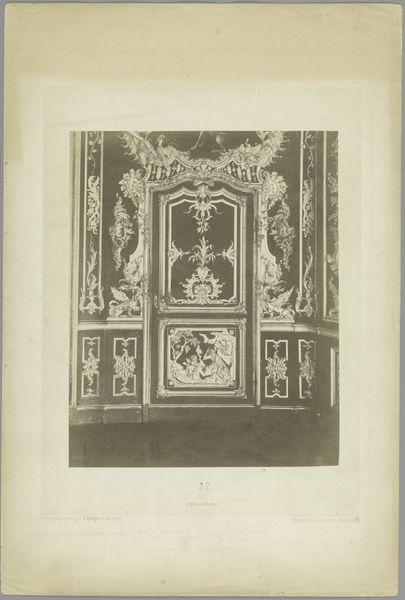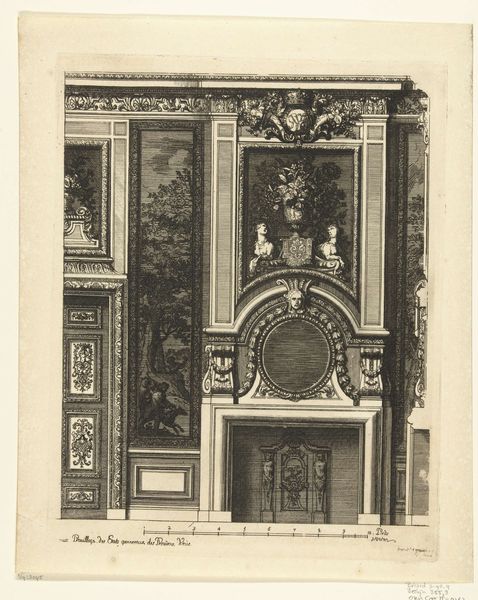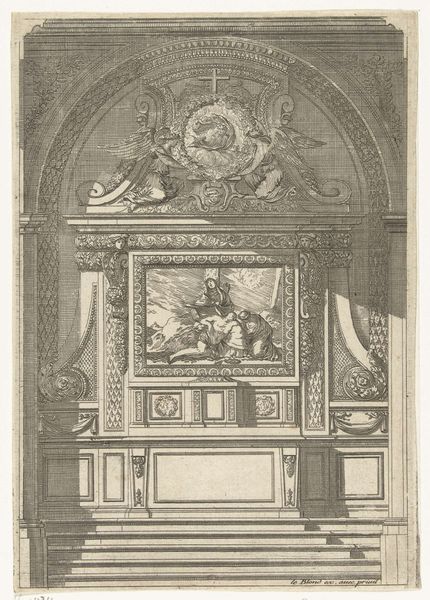
drawing, engraving, architecture
#
drawing
#
baroque
#
old engraving style
#
perspective
#
history-painting
#
engraving
#
architecture
Dimensions: height 247 mm, width 194 mm
Copyright: Rijks Museum: Open Domain
Curator: Here we have "Engelse onderboezem" or "English bosom," an engraving by Daniël Marot created before 1703. What strikes you initially about this depiction of an interior? Editor: The severity. While the ornamentation is elaborate, there's a certain rigidity in the composition that feels very controlled, very deliberate. Is this representative of power structures? Curator: In many ways, yes. Marot, as a designer working for royal courts like William and Mary, meticulously rendered interiors meant to project authority. Note the careful symmetry, the repeated motifs. The architecture, the paintings displayed salon-style, everything is meticulously arranged. This precision echoes the order the monarchy sought to impose. Editor: The fireplace, particularly, becomes this centralizing force. It's flanked by busts, overlooked by a clock, dominating the visual field. It seems almost like a throne, or perhaps, a stage. Does the design itself reflect societal power dynamics? Curator: Absolutely. The use of perspective guides the eye, reinforcing a hierarchy. Consider, too, the materials—likely imagined as marble and rich wood—and the skill required to execute such a design. These elements communicated wealth and status. Moreover, engravings like this functioned as blueprints, disseminating these styles across Europe and reinforcing aristocratic visual culture. Editor: So, it's not just a depiction of an interior; it's a propagation of a certain ideology? I also can’t help noticing the rather diminutive figures in the paintings. Is it down to perspective or an attempt to dwarf any human presence in the room? Curator: It's both a product and a promoter of its era's values, a visual language of power and control. The contrast in scale that you mention, further reinforces that theme, diminishing human representation. Marot designed not just rooms but entire worlds predicated on specific societal structures. Editor: Understanding the drawing's composition helps in understanding its historical impact. I initially thought it seemed cold and aloof, but recognizing how actively it reinforces existing power structures reveals its underlying intent. Curator: Indeed, by dissecting the visual language, we unveil the beliefs it perpetuates. An aesthetic project inextricably intertwined with social narratives.
Comments
No comments
Be the first to comment and join the conversation on the ultimate creative platform.
